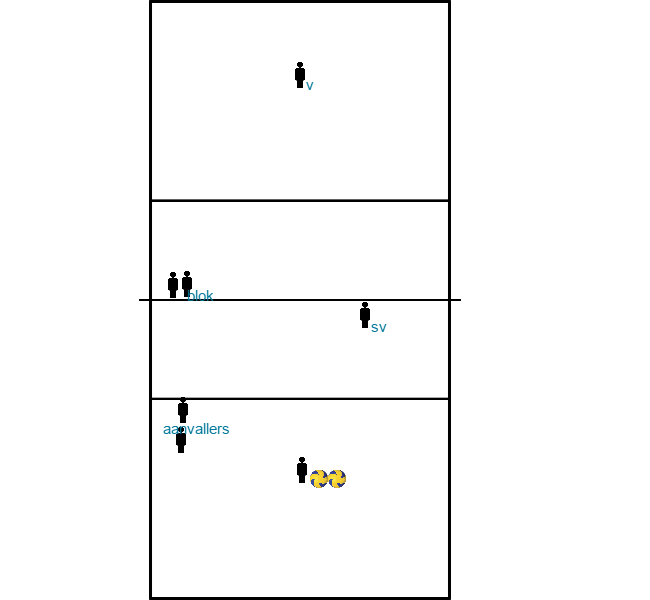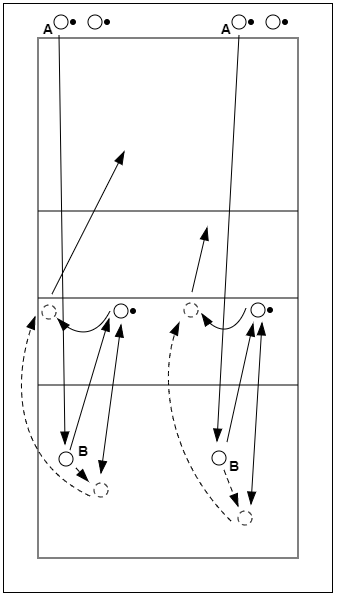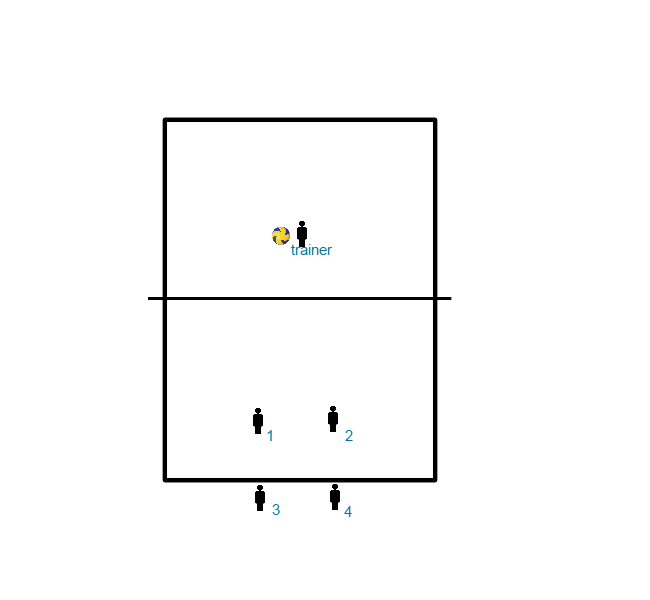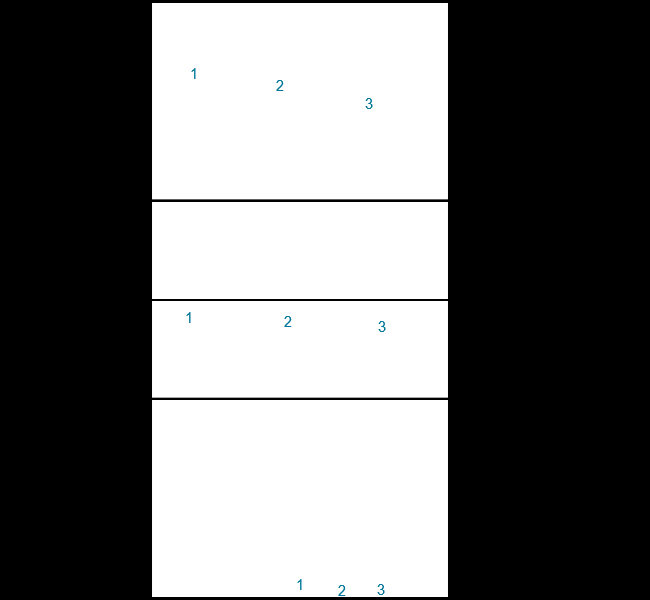Volleyball drills for technique passing / defense / reception

- Trainer throws the ball to the playmaker
- Sv gives set up to Attacker
- A must hit
- Block must be set up well by the outside and the middle joins in.
- V defends the ball
- After 10 turns
2 groups, with 1 row with ball at the net. This one jumps and throws the ball over the net to a passer. The passer passes to the catcher, who joins the line again.
In pairs:
throwing in (throw over 2 arms, 1 arm left and right, bounce idem, hit)
Overlap, 40X
pass underhand 40X
work in the back of the field: left-right, backline short ball (possible diving)
A serves to B. B passes the ball to the playmaker, who then plays a high ball into the backfield. B defends this ball back to the playmaker, who then gives a setup for B. B attacks this setup.
After the attack, A takes B's place and B becomes a reserve. The playmaker stays.
The attackers use the left half of the court with one playmaker. The middle attackers and diagonal attackers use the right half with another playmaker.
Extension:
After the service, A takes a second ball. After B's attack A throws this ball into the field. B plays this ball to the playmaker, the playmaker gives a setup and B attacks again.

- 2 rows of players
- 1 row on the left back
- 1 row at the right back
- 1 SV
- create with 3 pawns a virtual line where they have to stand.
- trainer stands at the other side of the net and throws the ball somewhere in the field.
- 1 of the 2 front rows calls LOS orI (agree on this) and plays the ball to SV
- This one calls new SV
- SV takes ball and puts ball in ball pit
- SV joins one of the rows
Then a row of attackers on the outside and a regular SV joins them
Pass to SV, who gives a set-up to the outside, attacker retrieves ball.
After that with a block.
Offender is going to block
I play the ball in from the opposite field, 2 players come running in, pass the other catches, and the next 2.

- Trainer plays high ball in the back
- ! gives high ball to 2
- 2 gives set up to 1
- 1 hits diagonally
- 3 and 4 etc.
- As long as the 3s score from the service pass they may stay on the court.
- The cubes must try to prevent this by blocking and defending and the x's by serving as hard as possible.
- Every time a player scores from the service pass he gets a point.
- Points can only be scored from the service pass.
- Keep track of the points and see who scores 10 points first.
- X1 may defend after serving.

- Passing with the ball under the arms.
- Touch the ground before passing.
- Player throws ball over the net.
- Here someone is passing.
- This person passes to the set up man, who sets up the ball along the net.
- Catch and join the other throw-ins.
- 2 rows of players
- 1 row on the left back
- 1 row on the right back
- 1 SV
- create with 3 pawns a virtual line where they have to stand.
- coach stands at the other side of the net and throws the ball somewhere in the field
- 1 of the 2 in front of the rows calls LOS orI (agree on this) and plays the ball to SV
- This one becomes the new SV
- SV takes ball and puts ball in ball pit
- SV joins one of the rows
Then a row of attackers on the outside and a regular SV joins them
Pass to SV, who gives a set-up to the outside, Attacker retrieves ball.
- 2 rows of players
- 1 row on the left back
- 1 row at the right back
- 1 SV
- create with 3 pawns a virtual line where they have to stand.
- trainer stands at the other side of the net and throws the ball somewhere in the field.
- 1 of the 2 in front of the rows calls LOS orI (agree on this) and plays the ball to SV
- This one becomes the new SV
- SV takes ball and puts ball in ball pit
- SV joins one of the rows
Then a row of attackers on the outside and a regular SV joins them
Pass to SV, who gives a set-up to the outside, attacker retrieves ball.
- Players stand on the back line facing away from the net.
- Trainer stands on the other side of the net.
- Trainer calls out a name and throws the ball into the field.
- The called player must pass the ball and catch it for himself.
- The player who is called has to pass the ball and catch it for himself.








